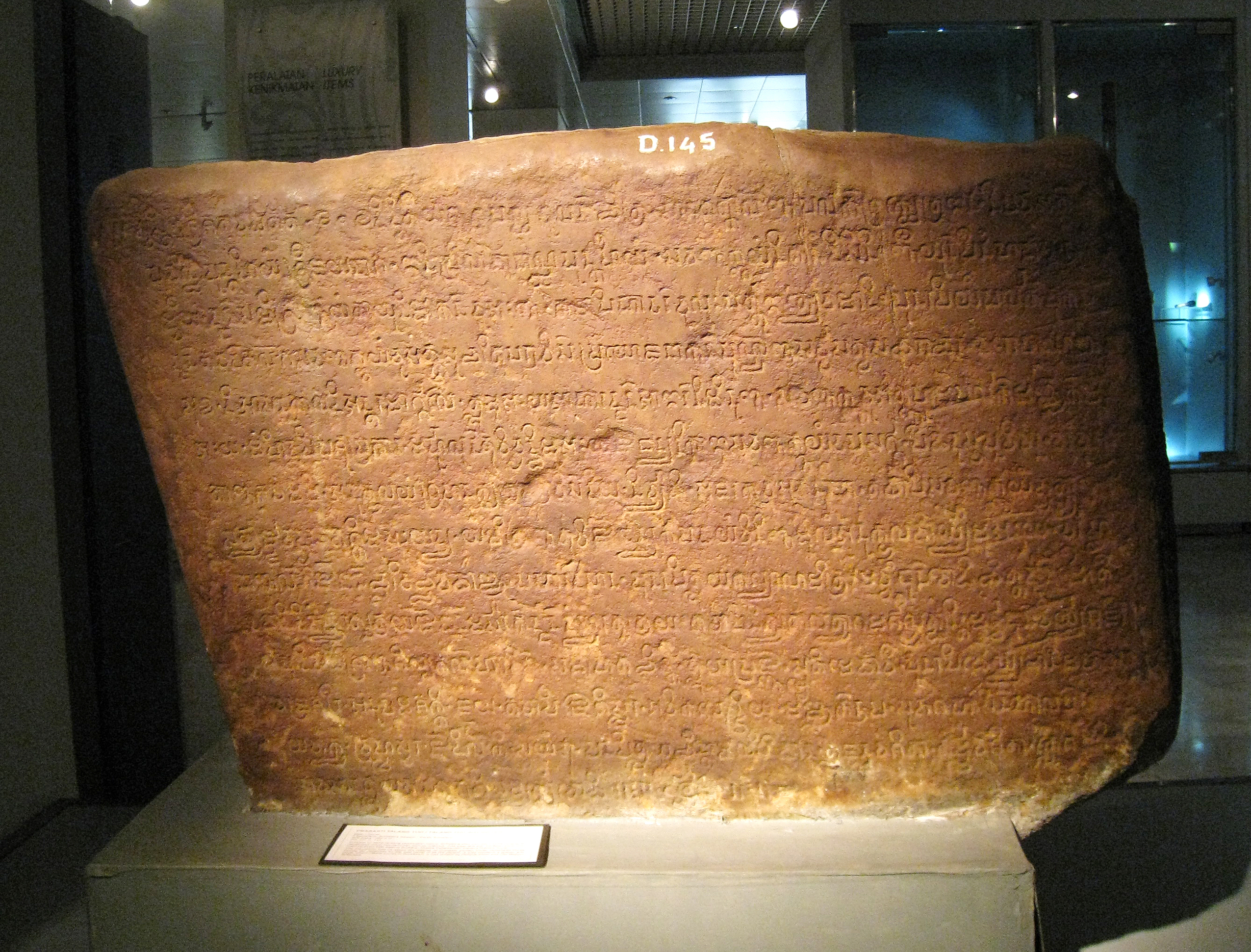|
Kulai District
The Kulai District is a district in the state of Johor, Malaysia. Its district capital is Kulai Town. It covers Kulai Town, Ayer Bemban, Bandar Putra Kulai, Bukit Batu, Indahpura, Bandar Baru Kangkar Pulai, Kelapa Sawit, Saleng, Sedenak, Seelong, Senai, and Sengkang. Kulai is also within Iskandar Malaysia economic zone. Name The district was formerly a part of the Pulai Valley, which covered Mukim Pulai and the current subdistrict. The name Kulai 龟来 (), which means ''turtles are coming'', was a Chinese mispronounciation of Pulai. Chinese Hakka peoples led by a man named Huang Guo Mao emigrated to Johor from Qing China during the late 19th century and opened a settlement in the area, and had renamed the place after the influx of turtles coming to the area after heavy flooding. Geography Kulai is one of three landlocked districts of Johor (the other two being Kluang and Segamat) with an area of , which is slightly smaller than the size of Singapore, a soverei ... [...More Info...] [...Related Items...] OR: [Wikipedia] [Google] [Baidu] |
Districts Of Malaysia
Districts (; ''Jajahan'' in Kelantan) are a type of subdivision below the States and federal territories of Malaysia, state level in Malaysia. An administrative district is administered by a lands and district office () which is headed by district officer (). Classification In Peninsular Malaysia, a district is a subdivision of a States and federal territories of Malaysia, state. A ''mukim'' (Commune (administrative division), commune, sub-district or parish) is a subdivision of a district. The National Land Code (Malaysia), National Land Code assigns land matters, including the delineation of districts, to the purview of State governments of Malaysia, state governments. These states operate a Torrens title, Torrens system, with districts administered by the respective state’s land and district office, and coordinated by the land and mines office. The state of Perlis is not divided into districts due to its size, but straight to the mukim level. The three Federal Territories ... [...More Info...] [...Related Items...] OR: [Wikipedia] [Google] [Baidu] |
Seelong
Seelong is a small town in Kulai District, Johor, Malaysia. It is nearby the Senai International Airport Senai International Airport , formerly known as Sultan Ismail International Airport, is an international airport serving Johor Bahru District, Malaysia's second most populous district and other regions in southern Peninsular Malaysia. Located i ... and Senai Industrial Park. Transportation The area is accessible by Muafakat Bus route P-402. References Kulai District {{Johor-geo-stub ... [...More Info...] [...Related Items...] OR: [Wikipedia] [Google] [Baidu] |
Malay Singaporean
Malay Singaporeans () are Singaporeans of Malays (ethnic group), Malay ancestry, including those from the Malay Archipelago. They constitute approximately 13.5% of the country's residents, making them the second largest ethnic group in Singapore. Under the Constitution of Singapore, they are recognised by the government as the Indigenous peoples, indigenous people of the country, with Malay language, Malay as the national language of Singapore. At the time of the arrival of British colonial official Stamford Raffles in 1819, the native Malays were the majority living on the island, which at the time had a total estimated population of approximately 1,000. Another estimate placed that at the time of his arrival, the population was 120 Malays, 30 Chinese and some local indigenous Orang Laut tribes. From the 19th century until World War II, the Malays enjoyed favourable treatment whereby they were not resettled for labour and their traditional lifestyles were generally left undis ... [...More Info...] [...Related Items...] OR: [Wikipedia] [Google] [Baidu] |
Orang Asli
The Orang Asli are a Homogeneity and heterogeneity, heterogeneous Indigenous peoples, indigenous population forming a national minority in Malaysia. They are the oldest inhabitants of Peninsular Malaysia. As of 2017, the Orang Asli accounted for 0.7% of the population of Peninsular Malaysia. Although seldom mentioned in the country's demographics, the Orang Asli are a distinct group, alongside the Malaysian Malays, Malays, Malaysian Chinese, Chinese, Malaysian Indians, Indians, and the Orang Asal, indigenous East Malaysians of Sabah and Sarawak. Their special status is enshrined in law. Orang Asli settlements are scattered among the mostly Malay population of the country, often in mountainous areas or the jungles of the rainforest. While outsiders often perceive them as a single group, there are many distinctive groups and tribes, each with its own language, culture and customary land. Each group considers itself independent and different from the other communities. What main ... [...More Info...] [...Related Items...] OR: [Wikipedia] [Google] [Baidu] |
Srivijaya
Srivijaya (), also spelled Sri Vijaya, was a Hinduism, Hindu-Buddhism, Buddhist thalassocracy, thalassocratic empire based on the island of Sumatra (in modern-day Indonesia) that influenced much of Southeast Asia. Srivijaya was an important centre for the expansion of Buddhism from the 7th to 11th century AD. Srivijaya was the first polity to dominate much of western Maritime Southeast Asia. Due to its location, Srivijaya developed complex technology utilizing maritime resources. In addition, its economy became progressively reliant on Maritime Silk Road, the booming trade in the region, thus transforming it into a luxury good, prestige goods-based economy. The earliest reference to it dates from the 7th century. A Tang dynasty Chinese people, Chinese Bhikkhu, monk, Yijing (monk), Yijing, wrote that he visited Srivijaya in 671 for six months. The earliest known inscription in which the name Srivijaya appears also dates from the 7th century in the Kedukan Bukit inscription fo ... [...More Info...] [...Related Items...] OR: [Wikipedia] [Google] [Baidu] |
Bandar Kulai
Bandar or Bunder may refer to: Places * Bandar, Afghanistan * Bandar, Narayanganj, Bangladesh * Bandar, Isfahan, Iran * Bandar, Kermanshah, Iran * Bandar, Yazd, Iran * Bandar Ainsdale, Malaysia * Banda Aceh, Indonesia * Bandar Lampung, Indonesia * Bandar Seri Begawan, Brunei *Machilipatnam, India, alternative name Persons Given name * Bandar Al Hajjar (born 1953), Saudi Arabian economist * Bandar bin Talal Al Rashid, one of the emirs of Jabal Shammar * Bandar bin Abdulaziz Al Saud, a former senior prince in Saudi Arabia * Bandar bin Faisal Al Saud, a former Saudi royal * Bandar bin Khalid Al Saud, Saudi businessman * Bandar bin Sultan Al Saud, former Saudi ambassador to the USA * Bandar Abdulrahman Al-Mohanna, Saudi Group Chief Executive Officer and Managing Director of NAS Air (Flynas) *Bandar Nasser (born 1990), Saudi professional footballer Surname * Awad Hamed al-Bandar, Iraqi chief judge under Saddam Hussein's presidency Father name * Faisal bin Bandar Al Saud, ... [...More Info...] [...Related Items...] OR: [Wikipedia] [Google] [Baidu] |
Sovereign Country
A sovereign state is a state that has the highest authority over a territory. It is commonly understood that a sovereign state is independent. When referring to a specific polity, the term "country" may also refer to a constituent country, or a dependent territory. A sovereign state is required to have a permanent population, defined territory, a government not under another, and the capacity to interact with other sovereign states. In actual practice, recognition or non-recognition by other states plays an important role in determining the status of a country. Unrecognized states often have difficulty engaging in diplomatic relations with other sovereign states. History Since the end of the 19th century, almost the entire globe has been divided into sections (countries) with more or less defined borders assigned to different states. Previously, quite large plots of land were either unclaimed or deserted, or inhabited by nomadic peoples that were not organized into states. ... [...More Info...] [...Related Items...] OR: [Wikipedia] [Google] [Baidu] |
Segamat District
The Segamat District () or simply Segamat is a district in the Malaysian state of Johor. Segamat is also the name of the district's primary town. Segamat district is one of the three landlocked districts in Johor, the other being Kluang and Kulai. Etymology It is believed that 'Segamat' is derived from the Malay phrase '', which literally translates as 'very refreshing'. According to the local folklore, the phrase was uttered by a Bendahara during the Sultanate of Malacca upon drinking the water from the Segamat River. Geography The district is located in the northernmost part of Johor. It borders the state of Negeri Sembilan (Tampin and Jempol districts) to the northwest, the state of Pahang (Bera and Rompin districts) to the northeast, the district of Mersing to the east, the district of Kluang to the southeast, the district of Batu Pahat to the southwest and the districts of Muar and Tangkak to the west. Segamat is the primary town in the district. Other town ... [...More Info...] [...Related Items...] OR: [Wikipedia] [Google] [Baidu] |
Kluang District
Kluang is a district in Johor, Malaysia. Its district capital is Kluang Town. Kluang district is one of the three landlocked districts in Johor, the other being Segamat and Kulai. Geography Kluang District is 2,851.64 km2 in size. Kluang District is bordered by Segamat in the north, Batu Pahat in the west and Mersing in the east. The southern border of Kluang district meets Pontian, Kulai and Kota Tinggi. As the central district, it borders the most districts in Johor. Administrative divisions Kluang District is divided into eight mukims, which are: ;Kluang Municipal Council * Kahang * Kluang Town * Niyor * Paloh ;Simpang Renggam District Council * Layang-Layang * Machap * Renggam * Ulu Benut Government Kluang is divided into two local councils namely Simpang Renggam District Council () based at Simpang Renggam Town and Kluang Municipal Council () based at Kluang Town which is also the district capital. Towns *Paloh *Kahang *Renggam *Machap * Simpang Ren ... [...More Info...] [...Related Items...] OR: [Wikipedia] [Google] [Baidu] |
Qing China
The Qing dynasty ( ), officially the Great Qing, was a Manchu-led imperial dynasty of China and an early modern empire in East Asia. The last imperial dynasty in Chinese history, the Qing dynasty was preceded by the Ming dynasty and succeeded by the Republic of China. At its height of power, the empire stretched from the Sea of Japan in the east to the Pamir Mountains in the west, and from the Mongolian Plateau in the north to the South China Sea in the south. Originally emerging from the Later Jin dynasty founded in 1616 and proclaimed in Shenyang in 1636, the dynasty seized control of the Ming capital Beijing and North China in 1644, traditionally considered the start of the dynasty's rule. The dynasty lasted until the Xinhai Revolution of October 1911 led to the abdication of the last emperor in February 1912. The multi-ethnic Qing dynasty assembled the territorial base for modern China. The Qing controlled the most territory of any dynasty in Chinese h ... [...More Info...] [...Related Items...] OR: [Wikipedia] [Google] [Baidu] |
Hakka People
The Hakka (), sometimes also referred to as Hakka-speaking Chinese, or Hakka Chinese, or Hakkas, are a southern Han Chinese subgroup whose principal settlements and ancestral homes are dispersed widely across the provinces of southern China and who speak a language that is closely related to Gan Chinese, Gan, a Han Chinese dialect spoken in Jiangxi province. They are differentiated from other southern Han Chinese by their dispersed nature and tendency to occupy marginal lands and remote hilly areas. The Chinese characters for ''Hakka'' () literally mean "guest families". The Hakka have settled in Guangdong, Fujian, Jiangxi, Guangxi, Sichuan, Hunan, Zhejiang, Hainan, and Guizhou in China, as well as in Taoyuan City, Hsinchu County, Miaoli County, Pingtung County, and Kaohsiung City in Taiwan. Their presence is especially prominent in the Lingnan or Liangguang area, comprising the Cantonese-speaking provinces of Guangdong and Guangxi. Despite being partly assimilated to the Can ... [...More Info...] [...Related Items...] OR: [Wikipedia] [Google] [Baidu] |
Mukim Pulai, Johor
Pulai or Mukim Pulai is the largest mukim in District of Johor Bahru, State of Johor Darul Ta'zim, Federation of Malaysia. Name Iskandar Puteri City Council office in Skudai Mukim Pulai was named after Pulai River.Terbitan Handbook Pulai is a species of tree (sp. Alstonia angustiloba). The tree can be found in abundance at where Pulai River come from. [...More Info...] [...Related Items...] OR: [Wikipedia] [Google] [Baidu] |





